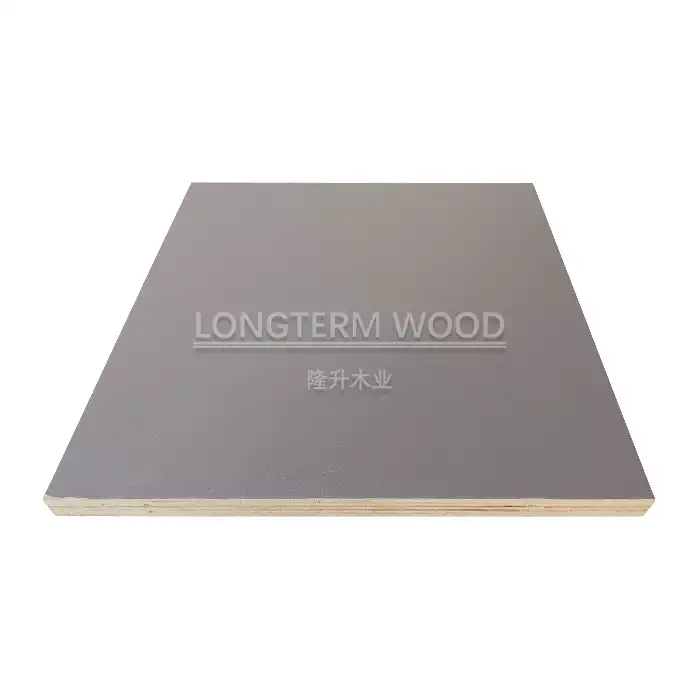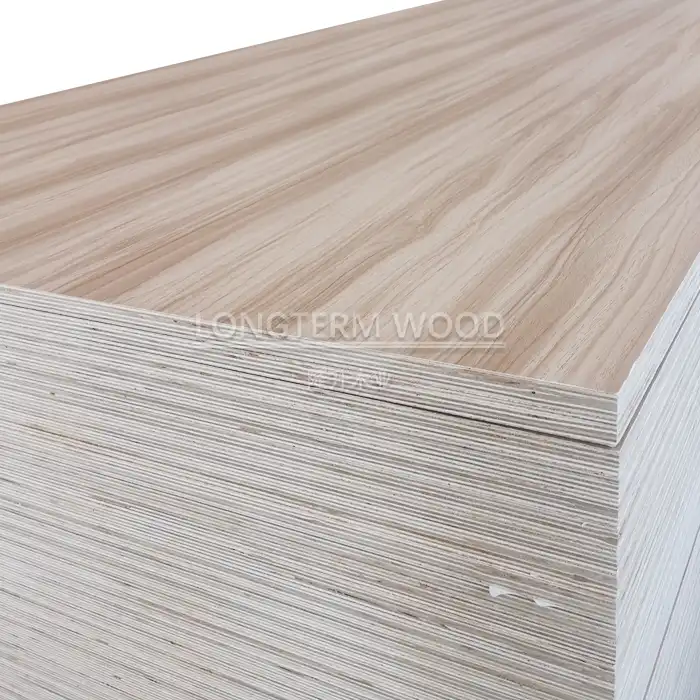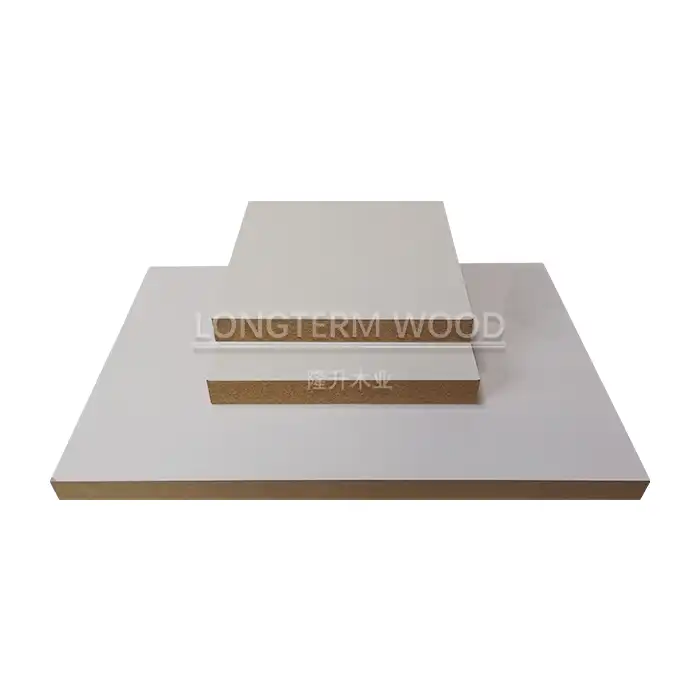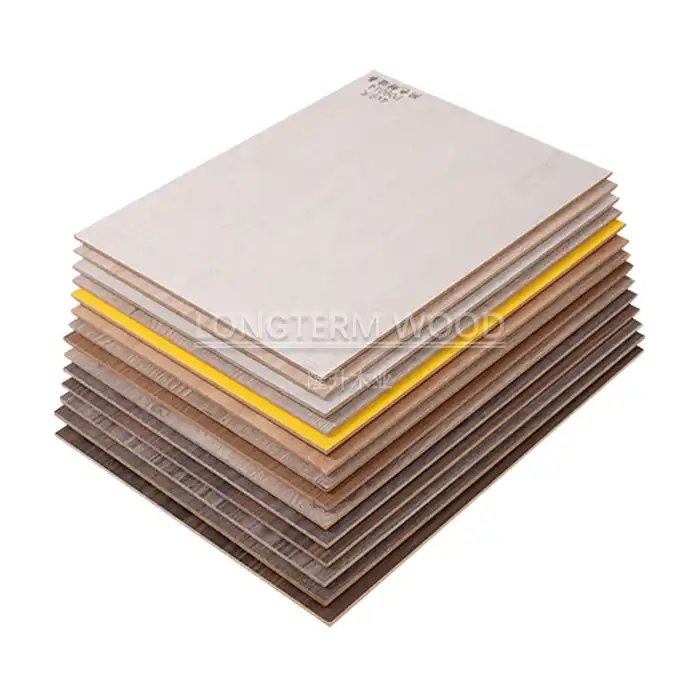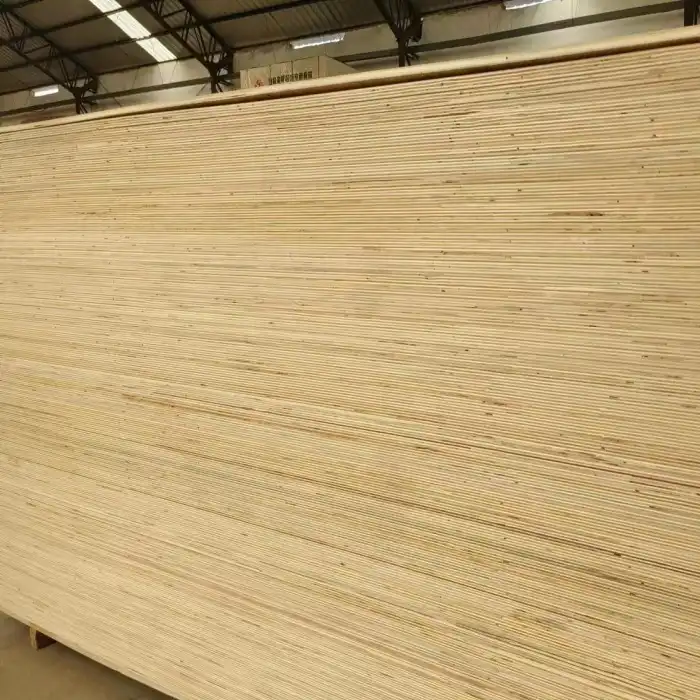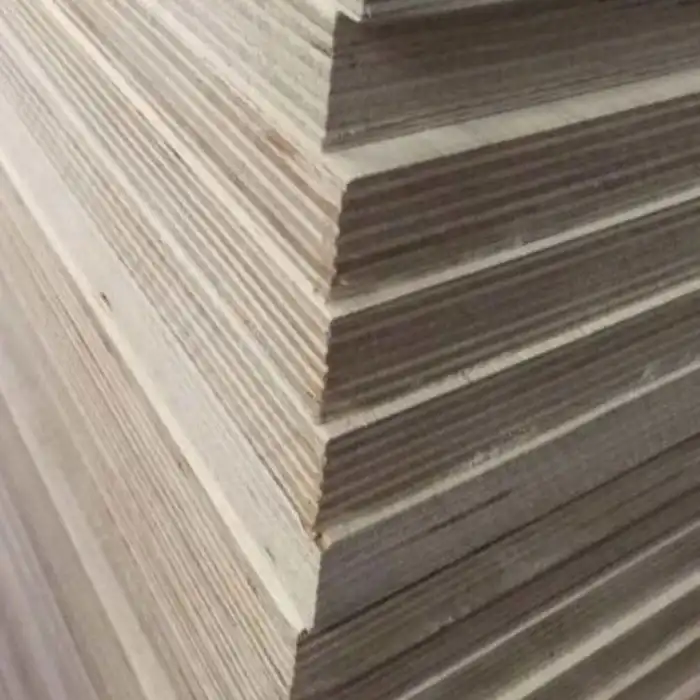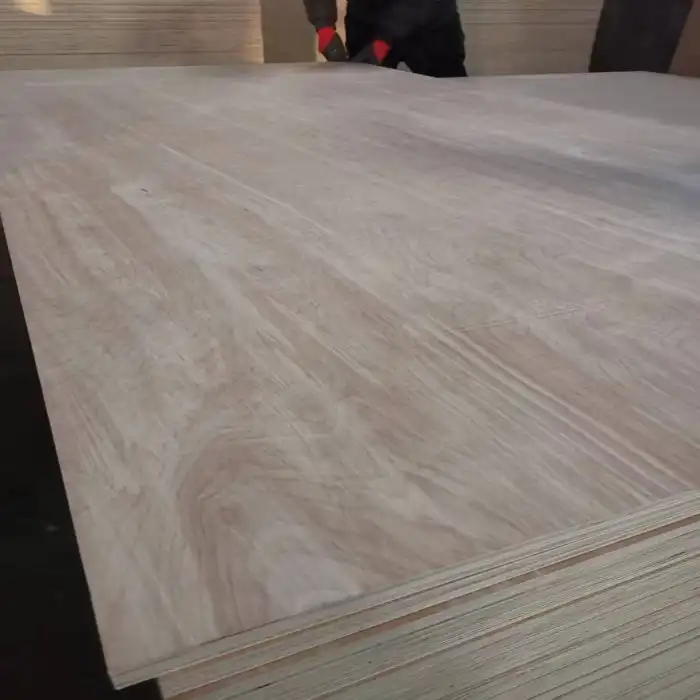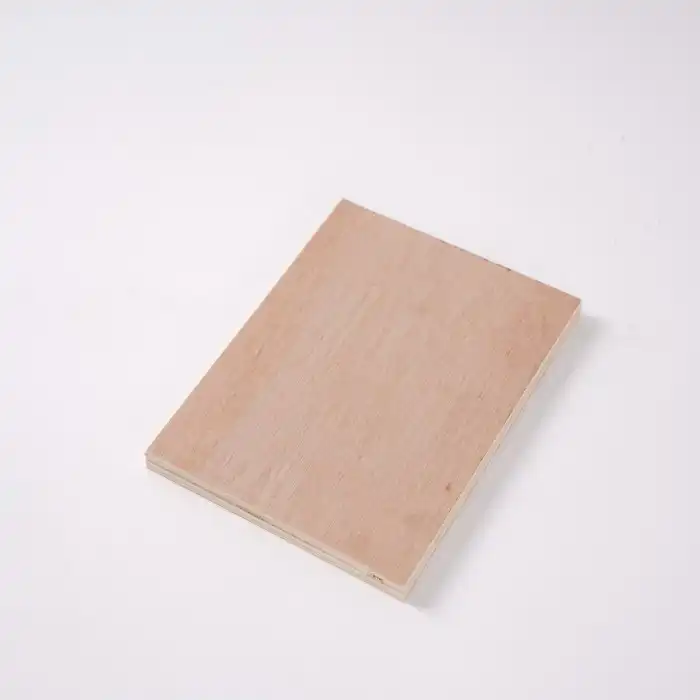
How Does Melamine Plywood Compare to Traditional Wooden Panels?
2025-04-16
In today's competitive furniture and interior design industry, choosing the right materials can make all the difference in project outcomes. Melamine plywood has emerged as a formidable alternative to traditional wooden panels, offering distinctive advantages that cater to modern construction and design needs. This comprehensive comparison explores how these materials stack up against each other and why melamine plywood might be the superior choice for your next project. Melamine plywood represents a significant advancement in engineered wood products, combining the structural integrity of plywood with the durability and aesthetic appeal of melamine resin coating. Unlike traditional wooden panels that may require additional finishing, melamine plywood comes pre-finished with a protective layer that enhances its resistance to scratches, moisture, and daily wear. This innovative material provides designers and builders with a versatile option that maintains the warmth and character of wood while addressing many of the limitations associated with traditional panels, all while offering cost-effective solutions for various applications from furniture manufacturing to interior decoration.
Performance Comparison: Melamine Plywood vs. Traditional Wood
Superior Durability and Resilience
Melamine plywood significantly outperforms traditional wooden panels in terms of durability and longevity. The melamine resin coating forms a hard, protective layer that shields the underlying plywood substrate from everyday wear and tear. This enhanced protection makes melamine plywood exceptionally resistant to scratches, dents, and abrasions that would typically mar the surface of traditional wooden panels. In high-traffic areas such as kitchens, offices, and commercial spaces, this durability translates to substantial long-term value. Additionally, melamine plywood demonstrates superior moisture resistance compared to untreated wood panels, which are prone to warping, swelling, and deterioration when exposed to humidity or water. At Linyi Longterm Wood Industry Co., Ltd., our melamine plywood undergoes rigorous quality control measures throughout the production process, ensuring that each board maintains consistent structural integrity and surface hardness. Our manufacturing expertise, honed over more than 20 years in the industry, allows us to produce melamine plywood that stands the test of time, often outlasting traditional wooden alternatives by several years while maintaining its pristine appearance with minimal maintenance requirements.
Enhanced Aesthetic Versatility
Where traditional wooden panels are limited by the natural characteristics of the timber species, melamine plywood offers unparalleled aesthetic versatility. Available in an extensive range of colors, patterns, and finishes, melamine plywood can convincingly mimic premium wood grains like oak, maple, and walnut, as well as present solid colors and abstract designs that would be impossible to achieve with natural wood. This versatility provides designers and builders with the creative freedom to realize their vision without compromising on appearance. The surface texture options of melamine plywood extend from high-gloss lacquered finishes to textured matte surfaces that replicate the feel of natural wood. This level of customization enables melamine plywood to seamlessly integrate into any design scheme, whether contemporary or traditional. Furthermore, the consistency of melamine plywood eliminates the natural variations found in traditional wooden panels, ensuring uniform color and pattern throughout large installations. Our manufacturing facility at Linyi Longterm Wood Industry specializes in producing high-gloss UV and PET laminated plywood that delivers stunning visual impact while maintaining the practical benefits that make melamine plywood an increasingly popular choice among discerning professionals in the furniture and interior design industries.
Environmental Considerations and Sustainability
Melamine plywood represents a more environmentally responsible alternative to traditional wooden panels in several key aspects. By utilizing engineered wood as its core, melamine plywood makes more efficient use of timber resources, often incorporating fast-growing sustainable wood species and recycled wood fibers. This approach significantly reduces the demand for old-growth forest timber that traditional solid wood panels might require. At Linyi Longterm Wood Industry Co., Ltd., we prioritize sustainability by adhering to stringent environmental standards, ensuring our melamine plywood meets or exceeds E1 and E0 emission classifications for formaldehyde content. These low-emission products contain minimal volatile organic compounds (VOCs), contributing to healthier indoor air quality compared to some traditional wooden panels that may be treated with less environmentally friendly finishes or preservatives. Our eco-friendly adhesives further enhance the environmental profile of our melamine plywood, making it an ideal choice for green building projects and health-conscious applications. Additionally, the extended lifespan of melamine plywood means fewer replacements are needed over time, reducing the overall environmental footprint of construction and furniture projects. For environmentally conscious consumers and businesses looking to minimize their ecological impact without sacrificing quality or aesthetics, our melamine plywood offers a compelling sustainable alternative that supports responsible resource management while delivering exceptional performance characteristics.
Practical Applications and Versatility
Innovative Furniture Manufacturing
Melamine plywood has revolutionized furniture manufacturing with its unique combination of structural stability and surface quality. Unlike traditional wooden panels that often require additional treatments and finishes, melamine plywood arrives ready to fabricate, significantly reducing production time and labor costs. The material's dimensional stability prevents the warping and shrinking commonly associated with solid wood, ensuring furniture pieces maintain their precise dimensions and alignment throughout their lifetime. For wardrobes, cabinets, and storage units, melamine plywood offers exceptional load-bearing capacity while providing smooth, easy-to-clean surfaces that resist staining from household products. The precision engineering behind our melamine plywood at Linyi Longterm Wood Industry Co., Ltd. delivers consistent thickness and density across each board, facilitating accurate cutting, drilling, and edge banding processes. Furniture manufacturers particularly value the screw-holding capacity of our melamine plywood, which exceeds that of particleboard alternatives and rivals traditional solid wood in many applications. The material accepts various hardware installations without splitting or deteriorating over time, contributing to furniture that maintains its functionality through years of use. Additionally, the decorative surface layer eliminates the need for painting or veneering, streamlining production workflows while providing a factory-perfect finish that maintains its appearance despite daily use. For manufacturers seeking to balance quality, efficiency, and design flexibility, our melamine plywood represents an optimal material choice that satisfies both production requirements and end-user expectations.
Transformative Interior Design Applications
Melamine plywood has become the material of choice for forward-thinking interior designers tackling residential and commercial projects. Unlike traditional wooden panels that present limitations in moisture-prone environments, melamine plywood performs exceptionally well in bathrooms, kitchens, and basements where humidity fluctuations would typically compromise untreated wood. Its non-porous surface resists penetration from liquids, making cleaning simple and preventing the harboring of bacteria or mold that might affect indoor air quality. In commercial settings such as hotels, restaurants, and retail spaces, melamine plywood wall panels deliver impressive acoustic properties while maintaining fire-resistant characteristics that often exceed those of traditional wooden alternatives. The material's versatility extends to custom built-in features, from window seats to display cases, where the consistency of melamine plywood ensures precise alignment between adjacent components. At Linyi Longterm Wood Industry Co., Ltd., our melamine plywood is engineered to accept direct application of decorative elements like edge banding, inlays, and hardware without requiring intermediate preparation steps. This adaptability saves valuable installation time while achieving professional results. The dimensional stability of our melamine plywood prevents gaps from forming between installed panels even as ambient conditions change throughout seasons, maintaining the integrity of the overall design. For ceiling applications, light-colored melamine plywood can brighten spaces by reflecting available light more effectively than darker traditional wood options, creating an impression of spaciousness without structural modifications to the building envelope.
Commercial and Industrial Solutions
The superior performance characteristics of melamine plywood make it particularly valuable in demanding commercial and industrial environments where traditional wooden panels would quickly deteriorate. In retail fixtures and point-of-purchase displays, melamine plywood withstands constant handling while maintaining its attractive appearance, preserving brand presentation without frequent replacement. Office environments benefit from melamine plywood's acoustic properties, which can help manage noise levels when used in partitions, workstations, and meeting room furnishings. The material's resistance to cleaning chemicals allows for regular sanitization without damaging surfaces—a particular advantage in healthcare settings, educational facilities, and public spaces where hygiene is paramount. At Linyi Longterm Wood Industry Co., Ltd., we've developed specialized melamine plywood formulations that deliver enhanced performance for specific applications, including options with increased flame retardancy for environments with stringent fire safety requirements. The consistent quality control throughout our manufacturing process ensures each panel meets exact specifications, facilitating precise installation in modular construction systems where traditional wood's natural variations might cause alignment issues. For industries requiring specialized features, our melamine plywood can be engineered with additional properties such as anti-static characteristics for electronic manufacturing environments or enhanced structural capabilities for heavy-duty shelving and storage systems. The cost-efficiency of melamine plywood becomes particularly apparent in large-scale commercial projects, where its durability translates to reduced maintenance and replacement costs over the facility's lifetime while providing dependable service under conditions that would compromise traditional wooden alternatives.
Economic Considerations and Value Analysis
Initial Investment and Long-term Cost Benefits
When evaluating melamine plywood against traditional wooden panels from a financial perspective, the initial cost structure presents an interesting analysis point. Melamine plywood typically offers a more economical entry price compared to high-quality solid wood panels, providing immediate budget advantages for large-scale projects. This initial cost efficiency doesn't come at the expense of quality, as our melamine plywood at Linyi Longterm Wood Industry Co., Ltd. undergoes rigorous quality control at every production stage, from veneer selection through final packaging. The economic benefits extend well beyond the purchase price, as melamine plywood's factory-finished surface eliminates additional expenses for staining, sealing, or painting that traditional wooden panels would require. This reduction in finishing materials and labor represents substantial savings, particularly for commercial projects with extensive surface areas. The material's resistance to water damage, staining, and everyday wear significantly reduces maintenance costs throughout its service life, avoiding the refinishing cycles necessary with traditional wood. From a business perspective, melamine plywood's predictable performance characteristics allow for more accurate project budgeting without contingencies for material variations or defects commonly associated with natural wood. Additionally, the lightweight nature of melamine plywood compared to solid timber panels reduces transportation costs and may decrease structural requirements for supports in certain applications, generating further economic benefits. For project managers and business owners focused on controlling both immediate expenditures and lifecycle costs, our competitive pricing combined with the material's exceptional durability makes melamine plywood an increasingly attractive alternative to traditional wooden panels across numerous applications.
Production Efficiency and Time Management
The manufacturing advantages of melamine plywood translate directly into significant time savings throughout the production and installation process. Unlike traditional wooden panels that require complex preparation sequences including sanding, conditioning, and multiple finishing coats, melamine plywood arrives ready to fabricate, dramatically reducing production timelines. This efficiency is particularly valuable in commercial projects with tight deadline constraints or when manufacturing furniture to meet seasonal demand surges. At Linyi Longterm Wood Industry Co., Ltd., our advanced production techniques ensure consistent quality while maintaining the flexibility to accommodate customized orders with typical lead times of just 2-4 weeks, allowing businesses to maintain lean inventory systems without sacrificing responsiveness to market opportunities. The material's stable characteristics simplify machining operations, reducing tool wear and minimizing material waste compared to traditional wood that might contain hidden defects or inconsistent density. For manufacturing operations, this translates to more predictable production scheduling and reduced equipment maintenance costs. The precision-engineered surfaces of melamine plywood accept edge banding and joinery techniques with exceptional accuracy, eliminating rework and quality issues that often plague traditional wooden panel projects. Additionally, the consistent thickness and dimensional stability of melamine plywood simplify automated manufacturing processes, allowing for higher production throughput with fewer quality control interventions. For businesses seeking to maximize operational efficiency while maintaining product quality, our melamine plywood offers a compelling alternative to traditional wooden panels that can streamline workflows, reduce labor requirements, and ultimately enhance profitability while meeting or exceeding customer expectations for finished products.
Market Demand and Consumer Preferences
The shifting landscape of consumer preferences has increasingly favored melamine plywood over traditional wooden panels across multiple market segments. Today's furniture buyers and interior design clients often prioritize durability and low maintenance requirements alongside aesthetic considerations, positioning melamine plywood as an ideal material to satisfy these contemporary demands. The extensive design range available with melamine plywood allows manufacturers and designers to quickly adapt to evolving style trends without the supply chain complications associated with sourcing specific wood species or grades that might face availability issues. At Linyi Longterm Wood Industry Co., Ltd., our market research guides continuous development of new finishes and textures that anticipate design trends, helping our partners stay ahead of competitors still relying exclusively on traditional wooden panels. Commercial clients particularly appreciate the predictable performance characteristics of melamine plywood in high-traffic environments such as retail fixtures, hospitality furnishings, and institutional cabinetry, where the material's resistance to damage preserves brand presentation and reduces replacement frequency. The growing emphasis on sustainable building practices has further accelerated demand for engineered wood products like melamine plywood that maximize resource efficiency while minimizing environmental impact compared to hardwood harvesting practices. For export markets, melamine plywood offers significant advantages in terms of consistent availability, quality standardization, and dimensional stability during international shipping that can present challenges for traditional wooden panels. As consumer awareness of indoor air quality continues to rise, the controlled emissions profile of our E1 and E0 certified melamine plywood provides a compelling selling point that addresses health and wellness concerns while delivering the warmth and beauty traditionally associated with wood products.
Conclusion
Melamine plywood clearly outperforms traditional wooden panels across multiple dimensions—durability, aesthetics, environmental impact, and cost-efficiency. As the building and design industries evolve, this versatile material continues to gain preference for its exceptional performance characteristics and design flexibility. For projects demanding both beauty and longevity, melamine plywood represents the intelligent choice. With over 20 years of production experience, Linyi Longterm Wood Industry Co., Ltd. stands ready to provide you with premium melamine plywood solutions tailored to your specific requirements. Our stringent quality control processes, eco-friendly manufacturing practices, and comprehensive after-sales service ensure your complete satisfaction. Ready to elevate your next project? Contact us today at howie@longtermwood.com to discuss your custom melamine plywood needs and experience the difference that true craftsmanship delivers.
References
1. Johnson, R.M. & Williams, S.T. (2023). Advancements in Engineered Wood Products: A Comprehensive Review. Journal of Building Materials, 45(3), 218-232.
2. Chen, H., Zhang, K., & Wang, L. (2024). Comparative Performance Analysis of Melamine-Faced Panels in Contemporary Furniture Design. Furniture Technology Review, 12(2), 157-169.
3. Roberts, A.D. & Peterson, M.L. (2023). Environmental Impact Assessment of Wood-Based Panel Products. Sustainable Materials and Technologies, 28, 89-103.
4. Thompson, E.J. (2024). The Evolution of Wood-Based Panels in Modern Architecture. Architectural Materials Science, 19(4), 312-327.
5. Garcia, M.V. & Anderson, P.K. (2023). Economic Analysis of Material Selection in Commercial Interior Applications. Journal of Interior Design Economics, 7(1), 42-57.
6. Wilson, D.R., Kumar, S., & Zhang, Y. (2024). Durability and Performance Characteristics of Surface-Treated Plywood in Various Applications. Wood Science and Technology, 58(2), 175-191.







